Abstract
Since February 1, 1980, 515 morbidly obese patients have undergone the Greenville gastric bypass (GGB) operation. Of these, 212 (41.2%) were euglycemic, 288 (55.9%) were either diabetic or had glucose intolerance, and 15 (2.9%) were unable to complete the evaluation. After the operation, only 30 (5.8%) patients remained diabetic (and 20 of these improved), 457 (88.7%) became and have remained euglycemic, and inadequate data prevented classification of the other 28 (5.4%). The patients who failed to return to normal glucose values were older and their diabetes was of longer duration than those who did. The effect of the GGB was not only limited to the correction of abnormal glucose levels. The GGB also corrected the abnormal levels of fasting insulin and glycosylated hemoglobin in a cohort of 52 consecutive severely obese patients with non-insulin-dependent diabetes. The GGB effectively controls weight. If morbid obesity is defined as 100 pounds over ideal body weight, 89% of the patients are no longer "morbidly" obese within 2 years. In most patients, the control of the weight has been well maintained during the 11 years of follow-up; most of the upward creep in weight of 20.8% between 24 and 132 months was from the 49 (9.5%) patients who had staple line breakdowns between the large and small gastric pouches. Non-insulin-dependent diabetes, previously considered a chronic unrelenting disease, can be controlled in the severely obese by the gastric bypass. Whether the correction of glucose metabolism affects the complications of diabetes is unknown. Whether the gastric bypass should be considered for patients with advanced non-insulin-dependent diabetes but who are not severely obese deserves consideration. The GGB has an unacceptably high rate of staple line failure. Accordingly, the authors have recently changed their procedure to one that divides the stomach rather than partitions it with staples.
Full text
PDF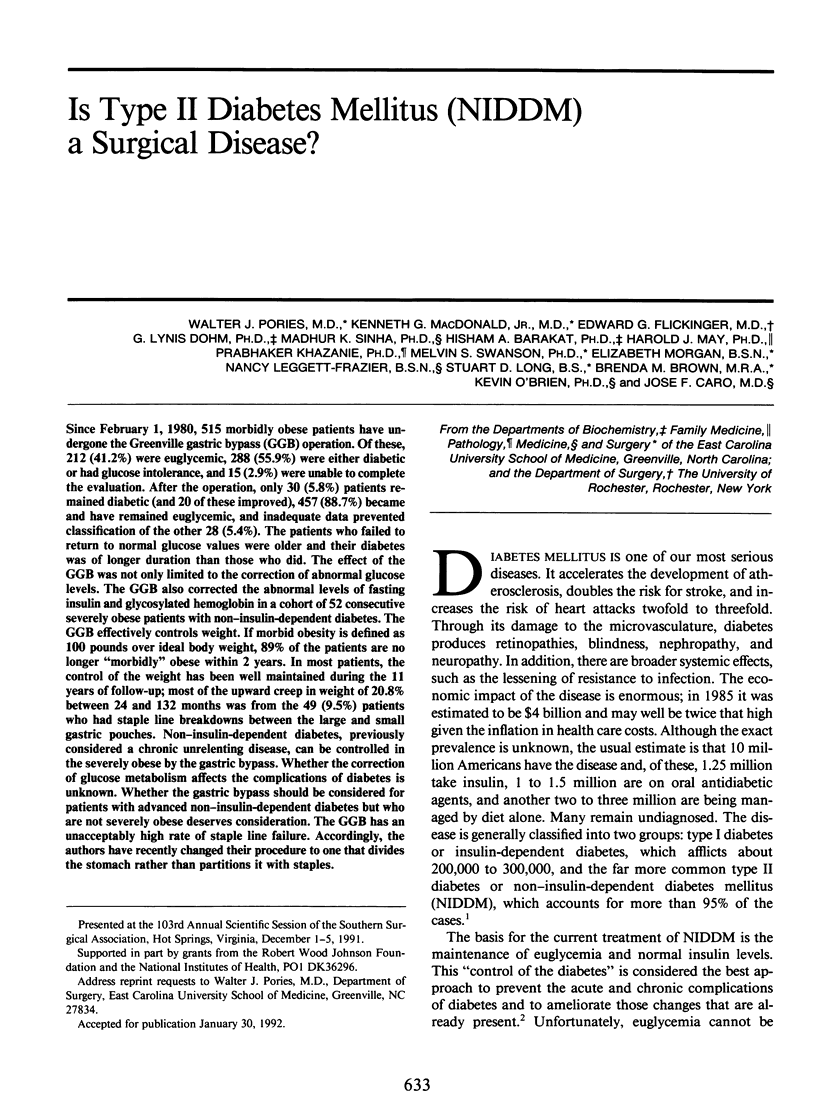
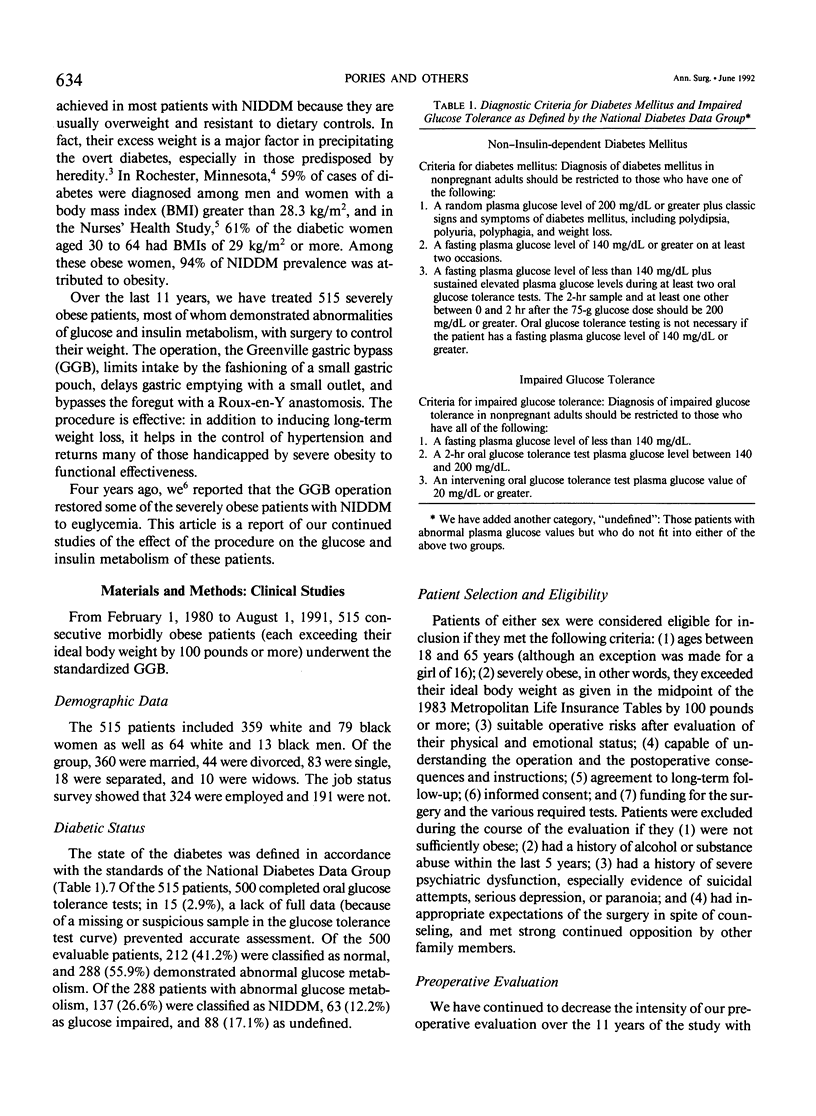
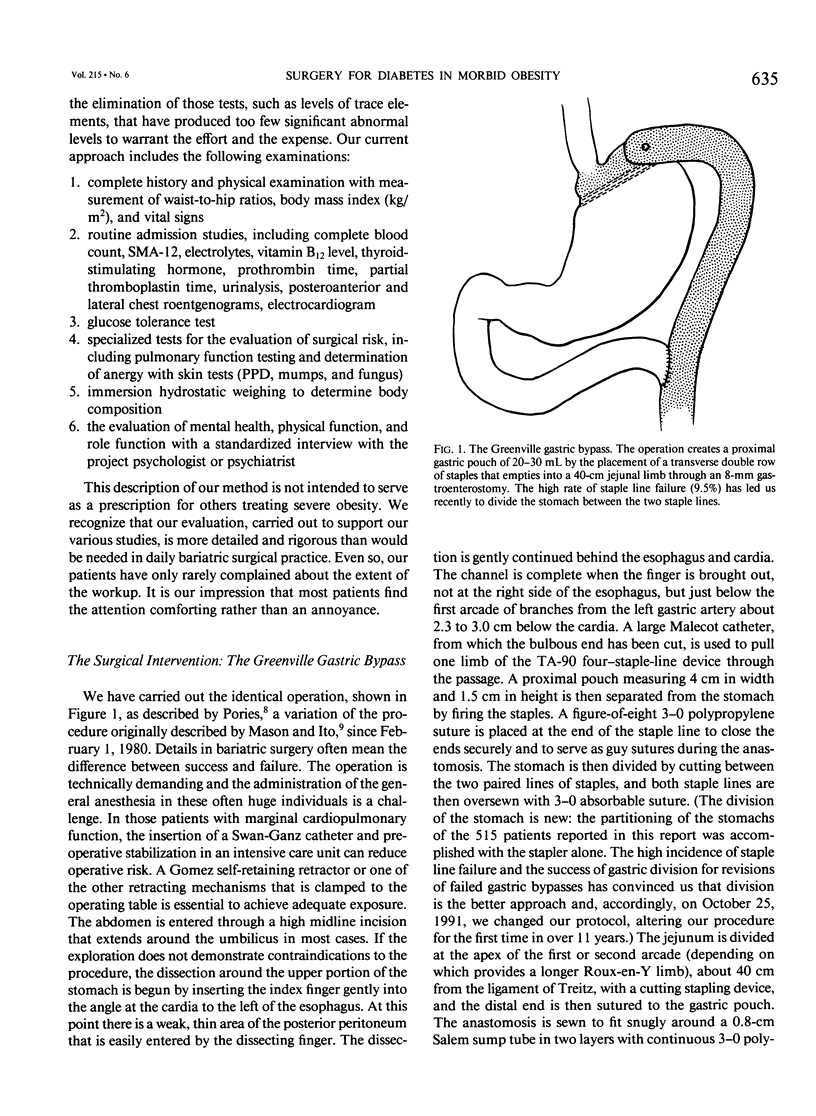
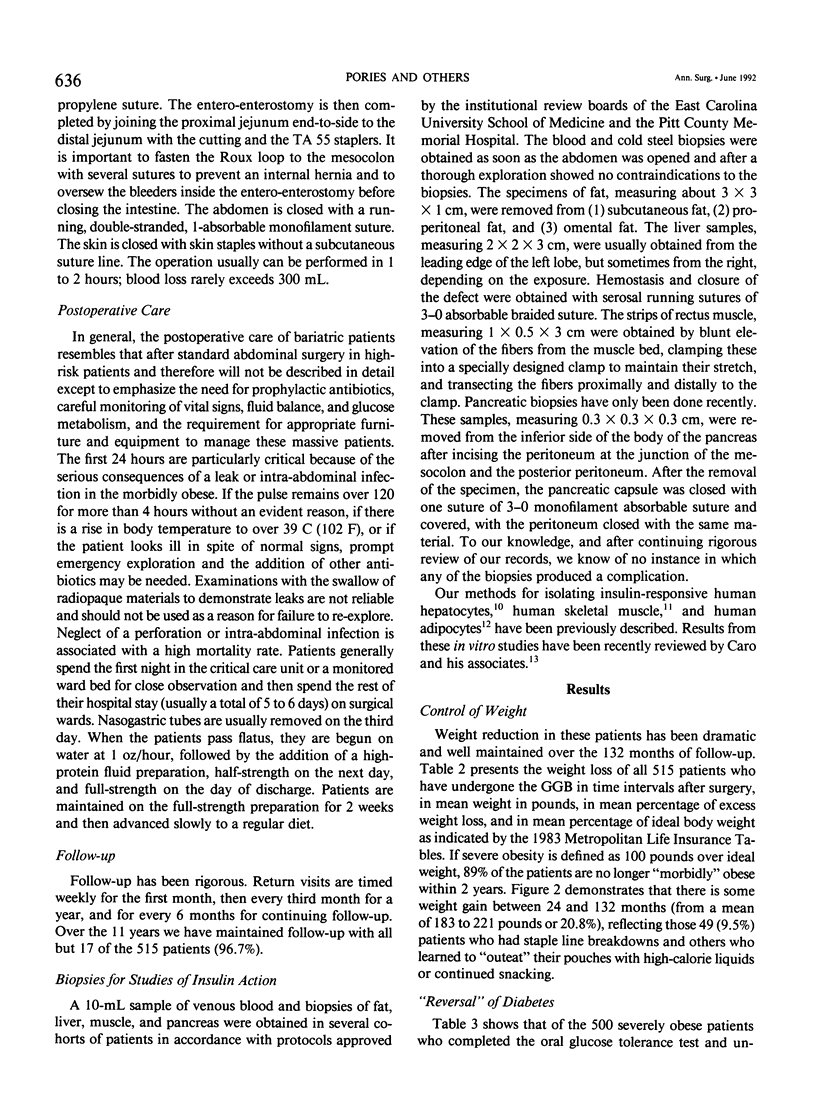
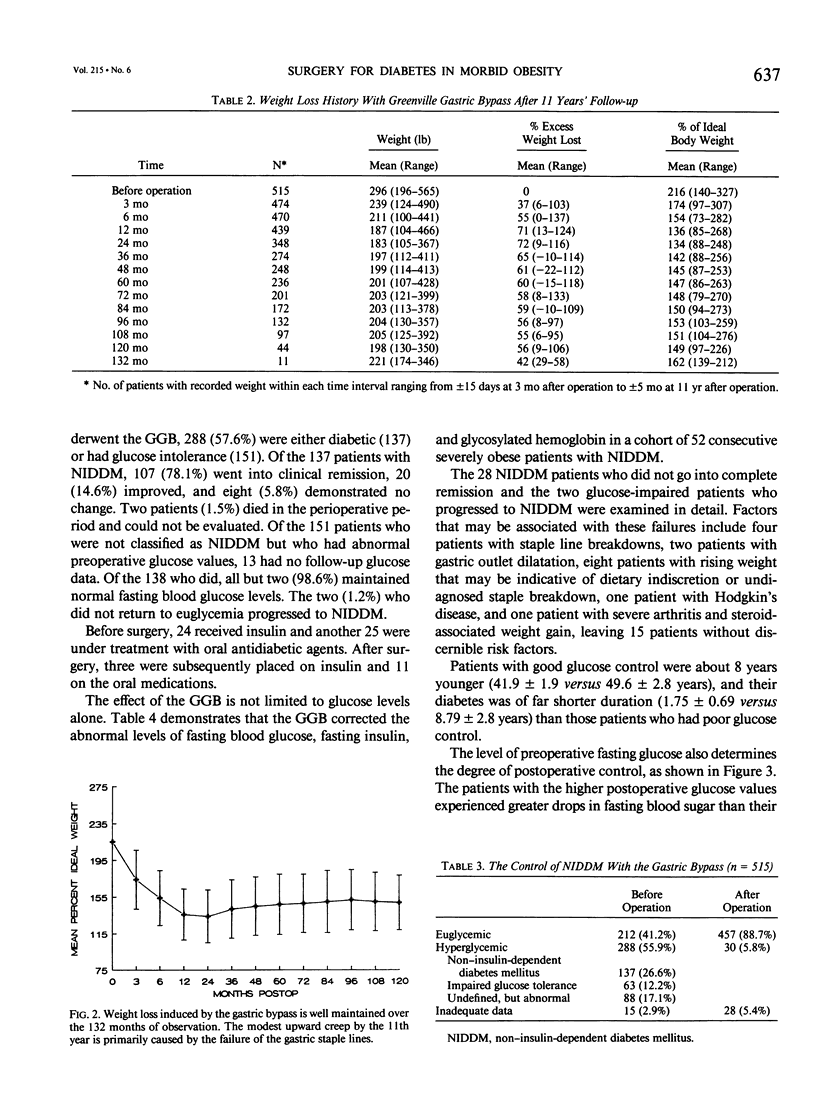
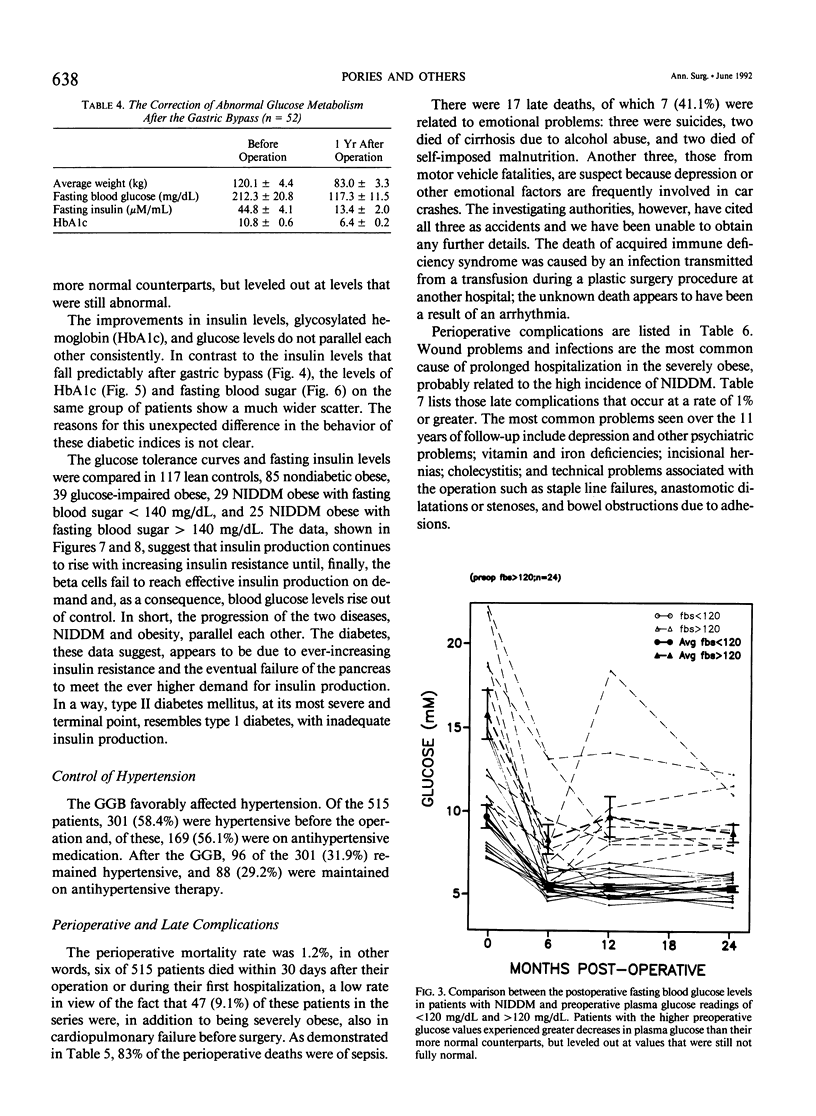
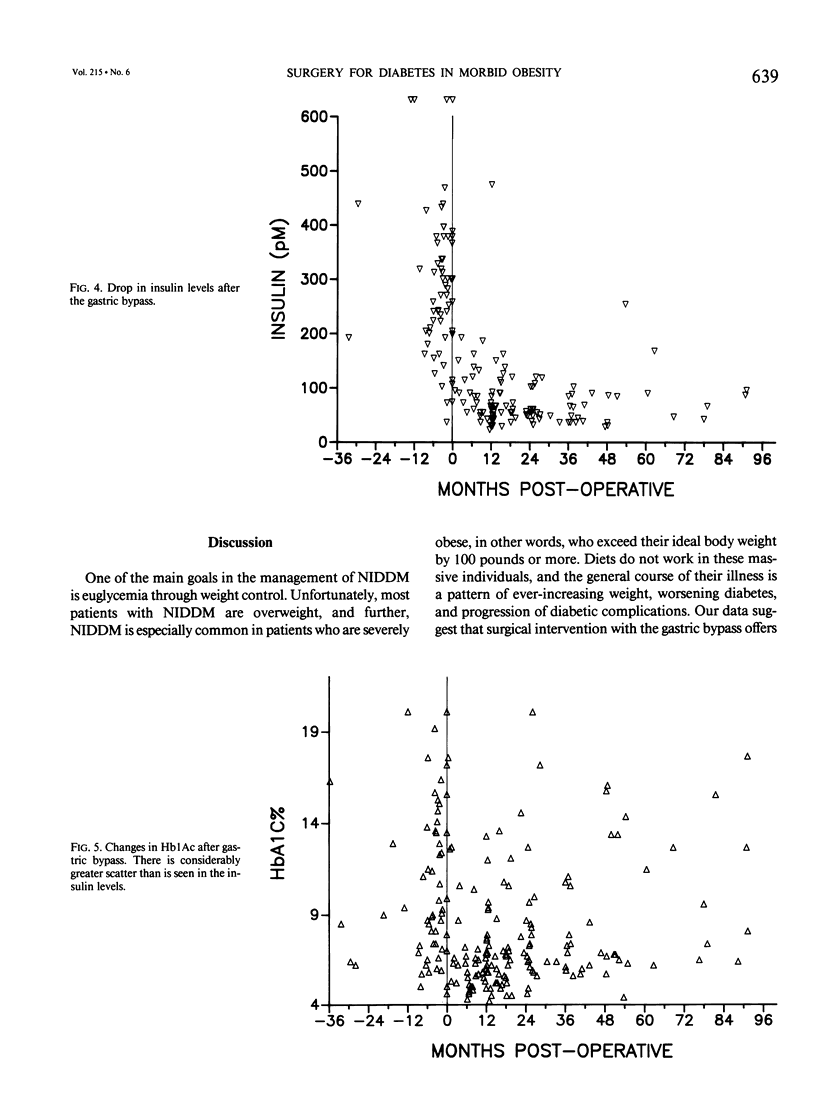
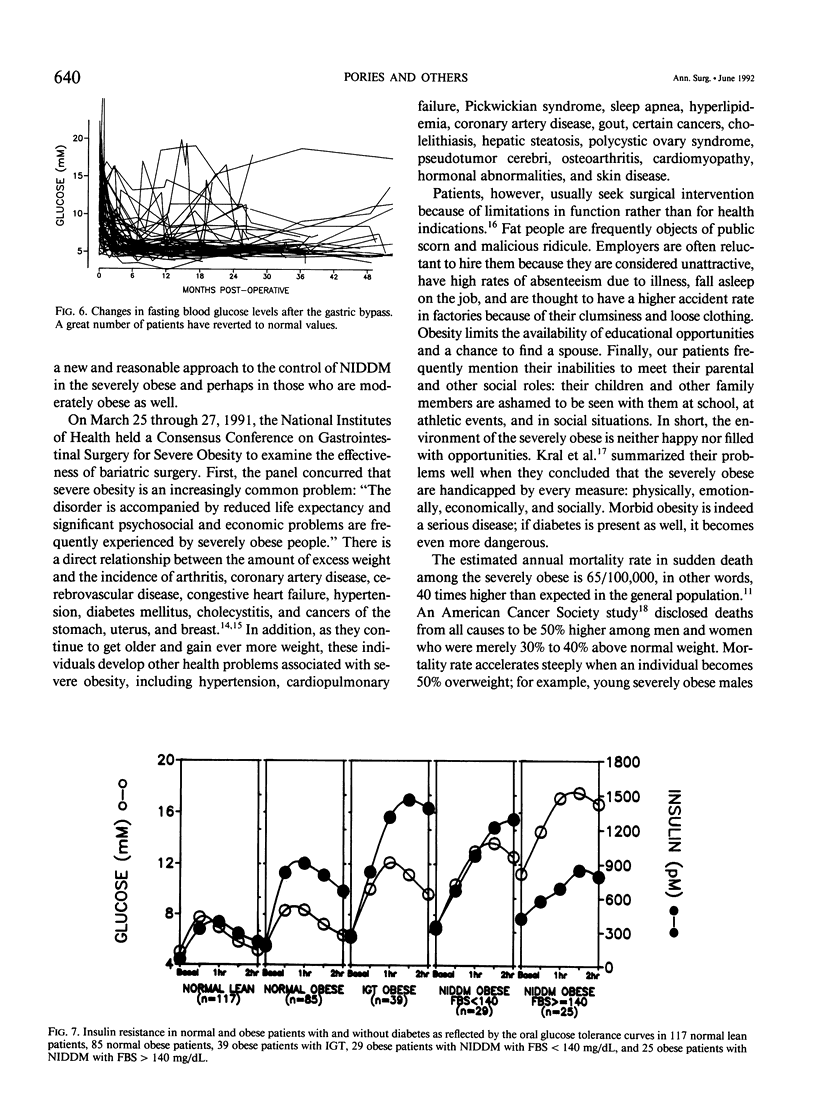

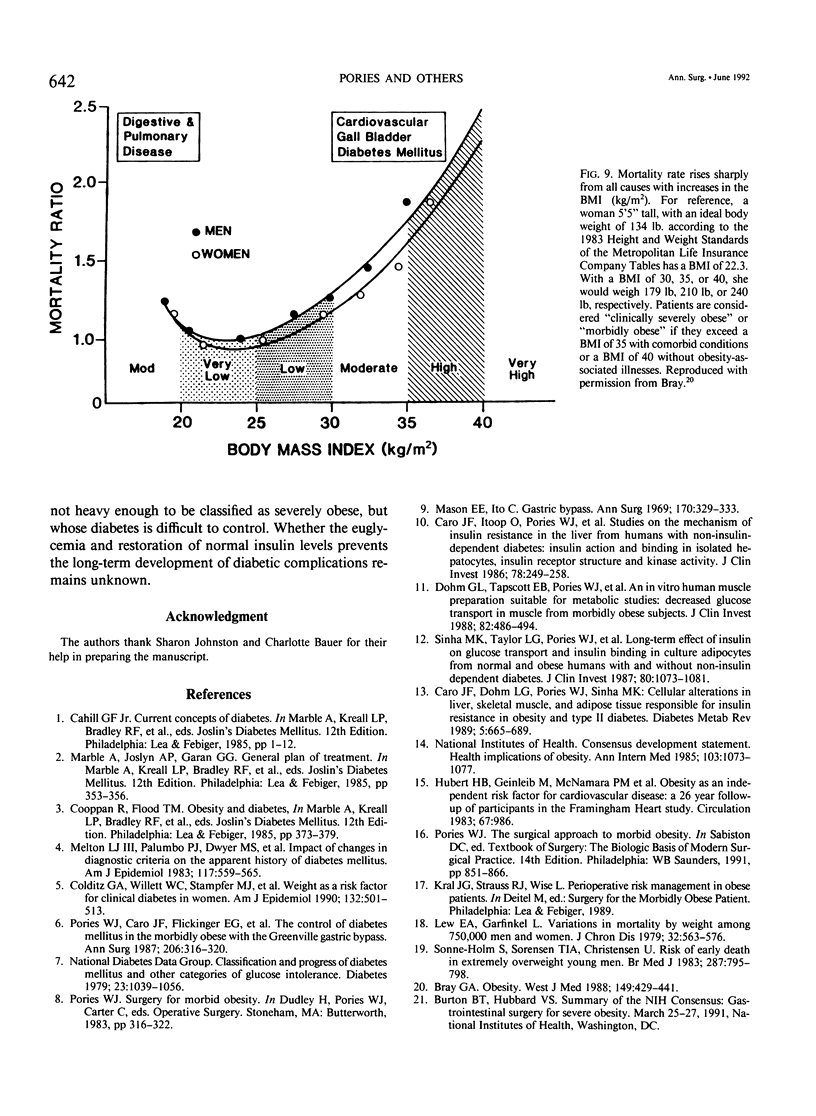
Selected References
These references are in PubMed. This may not be the complete list of references from this article.
- Bray G. A., Gray D. S. Obesity. Part I--Pathogenesis. West J Med. 1988 Oct;149(4):429–441. [PMC free article] [PubMed] [Google Scholar]
- Caro J. F., Dohm L. G., Pories W. J., Sinha M. K. Cellular alterations in liver, skeletal muscle, and adipose tissue responsible for insulin resistance in obesity and type II diabetes. Diabetes Metab Rev. 1989 Dec;5(8):665–689. doi: 10.1002/dmr.5610050804. [DOI] [PubMed] [Google Scholar]
- Caro J. F., Ittoop O., Pories W. J., Meelheim D., Flickinger E. G., Thomas F., Jenquin M., Silverman J. F., Khazanie P. G., Sinha M. K. Studies on the mechanism of insulin resistance in the liver from humans with noninsulin-dependent diabetes. Insulin action and binding in isolated hepatocytes, insulin receptor structure, and kinase activity. J Clin Invest. 1986 Jul;78(1):249–258. doi: 10.1172/JCI112558. [DOI] [PMC free article] [PubMed] [Google Scholar]
- Colditz G. A., Willett W. C., Stampfer M. J., Manson J. E., Hennekens C. H., Arky R. A., Speizer F. E. Weight as a risk factor for clinical diabetes in women. Am J Epidemiol. 1990 Sep;132(3):501–513. doi: 10.1093/oxfordjournals.aje.a115686. [DOI] [PubMed] [Google Scholar]
- Dohm G. L., Tapscott E. B., Pories W. J., Dabbs D. J., Flickinger E. G., Meelheim D., Fushiki T., Atkinson S. M., Elton C. W., Caro J. F. An in vitro human muscle preparation suitable for metabolic studies. Decreased insulin stimulation of glucose transport in muscle from morbidly obese and diabetic subjects. J Clin Invest. 1988 Aug;82(2):486–494. doi: 10.1172/JCI113622. [DOI] [PMC free article] [PubMed] [Google Scholar]
- Lew E. A., Garfinkel L. Variations in mortality by weight among 750,000 men and women. J Chronic Dis. 1979;32(8):563–576. doi: 10.1016/0021-9681(79)90119-x. [DOI] [PubMed] [Google Scholar]
- Mason E. E., Ito C. Gastric bypass. Ann Surg. 1969 Sep;170(3):329–339. doi: 10.1097/00000658-196909010-00003. [DOI] [PMC free article] [PubMed] [Google Scholar]
- Melton L. J., 3rd, Palumbo P. J., Dwyer M. S., Chu C. P. Impact of recent changes in diagnostic criteria on the apparent natural history of diabetes mellitus. Am J Epidemiol. 1983 May;117(5):559–565. doi: 10.1093/oxfordjournals.aje.a113578. [DOI] [PubMed] [Google Scholar]
- Pories W. J., Caro J. F., Flickinger E. G., Meelheim H. D., Swanson M. S. The control of diabetes mellitus (NIDDM) in the morbidly obese with the Greenville Gastric Bypass. Ann Surg. 1987 Sep;206(3):316–323. doi: 10.1097/00000658-198709000-00009. [DOI] [PMC free article] [PubMed] [Google Scholar]
- Sinha M. K., Taylor L. G., Pories W. J., Flickinger E. G., Meelheim D., Atkinson S., Sehgal N. S., Caro J. F. Long-term effect of insulin on glucose transport and insulin binding in cultured adipocytes from normal and obese humans with and without non-insulin-dependent diabetes. J Clin Invest. 1987 Oct;80(4):1073–1081. doi: 10.1172/JCI113163. [DOI] [PMC free article] [PubMed] [Google Scholar]
- Sonne-Holm S., Sørensen T. I., Christensen U. Risk of early death in extremely overweight young men. Br Med J (Clin Res Ed) 1983 Sep 17;287(6395):795–797. doi: 10.1136/bmj.287.6395.795. [DOI] [PMC free article] [PubMed] [Google Scholar]


